Text
How Digital spaces govern and manage behavior of users
For many, online spaces provide a space where users can create a new or modified identity to better suit themselves on a more intimate level; whilst this can often be a great way for individuals to express themselves and find like-minded people on a constructive level, it can equally happen in a negative manner.

Focusing more specifically towards the video gaming sphere ‘There is no question that gender inequality remains a significant issue in this historically male-dominated space, with overt expressions of sexism and gendered harassment still occurring regularly within gaming spaces’ (Maloney, M., Roberts, S., Graham, T. 2019 p.5)
‘Digitised spaces often replicate and in some cases are even seen to exacerbate inequalities between social groups’ (Haslop, C., O’Rourke, F., & Southern, R. 2021 p.1421). Taking this into consideration, we can see with statistics supplied with this week's lecture that shockingly 59% of women from a 2020 survey said they had been targeted with abusive and insulting language online.
As a gamer myself I certainly feel that on certain video games such as Overwatch (2016) and Apex Legends (2019) whilst the data shows that both games have a relatively equal amount of all genders who play the discourse surrounding both games feels male-dominated, particularly throughout the in-game voice chats. Which I feel can be largely attributed towards the aforementioned argument.
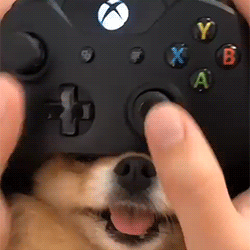
Keeping this in mind, whilst companies and platforms can put their own rules and guidelines in place it ultimately falls upon the users of any given platform to converse and interact in a respectful and inclusive manner towards each other. This is in a similar fashion to non-digital spaces, in which there may be laws and rules in place but the only way change is actually achieved is by a larger active societal acknowledgement and action taken by individuals to treat others fairly and equitably.
References:
Haslop, C., O’Rourke, F., & Southern, R. (2021). #NoSnowflakes: The toleration of harassment and an emergent gender-related digital divide, in a UK student online culture. Convergence, 27(5), 1418–1438.
Maloney, M., Roberts, S., Graham, T. (2019). Gender, Masculinity and Video Gaming. Palgrave
Plan International
0 notes
Text
Week 9, The Social Impacts of Gaming
Gaming is at its core, a social activity. From board games like chess and checkers to sports such as football and tennis. Videogames are of course no exception to this; since the first widely popular video game Pong in the 70’s to recent gaming phenomenons such as Fortnite the entire enjoyability of these games relies upon how people play against each other.
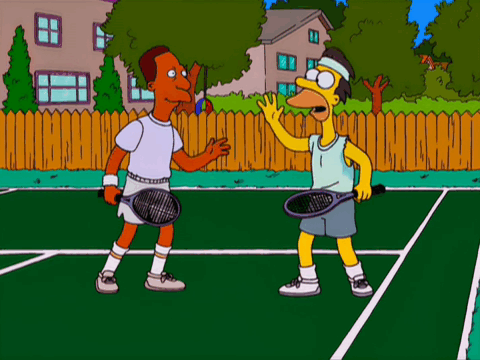
Interestingly in recent years multiplayer gaming has shifted towards a growing digital space as more developers focus purely upon online only multiplayer over local splitscreen multiplayer games. Developers such as Nintendo however still keep games such as Mariokart and Super Smash Bros. with a strong focus on local multiplayer to encourage a social gathering around their games. Gaming is also becoming increasingly broad in its audience, once associated with antisocial basement dwellers people across all ages, genders, socio-economic status etc are picking up a controller.
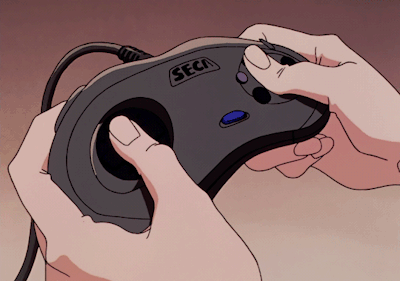
Something I found particularly insightful in one of this week's readings was how games, but most notably minecraft was used to ‘give children with social difficulties an opportunity to come to the foreground of social interactions through play’ (Hjorth, L, Richardson, I, Davies, H & Balmford, W 2021 p.43). It was found that the open-ended and player created goals of the game helped these children better connect and collaborate with peers in a way that they struggled with elsewhere.
Lastly, I wanted to touch back on the rise of gaming in the mainstream. Traditionally videogames are still mostly seen as entertainment from an industry producing a product, not as a cultural field deemed on the same level as other arts‘ Keogh, B 2021 p.213). I feel like in recent decades however, as games and the stories they can tell become grander in scale, more people than ever are starting to consider video games a fully respected and realised medium on par with film and television.
References:
Hjorth, L, Richardson, I, Davies, H & Balmford, W 2021, ‘Exploring play’ (chapter 2) Download ‘Exploring play’ (chapter 2), in Exploring Minecraft: Ethnographies of Play and Creativity, Palgrave Macmillan, pp.27-47.
Keogh, B 2021, 'The Melbourne indie game scenes: value regimes in localized game development' (Chapter 13), Download 'The Melbourne indie game scenes: value regimes in localized game development' (Chapter 13), in P Ruffino (ed), Independent Videogames: Cultures, Networks, Techniques and Politics, Routledge, pp.209-222.
0 notes
Text
Filters and image enhancement on social media
Following up on last week's post with the ethical debate surrounding the use of body modification on social media, filters and image editing follow much of the same discussion. Whilst the two topics have some crossover, this weeks post seeks to dive further into the more specific topic of filters and editing on social platforms.
The emphasis placed upon woman's physical appearance is interesting in the way that it favours short term happiness over long term joy and continues to become stricter and more demanding the longer users continue to engage with filters and social media. Ultimately ‘society has undermined women by increasingly valuing their worth by their aesthetic image. Creating a growing pressure on women to focus on their appearance and unrealistic feminine beauty standards.’ (Coy-Dibley, I., 2016 p.6). Whilst this is sadly nothing new, the pressure on women to look and act a certain a way has been around ever since patriarchy has been the most common global structure, the rise of social media has created a more insidious form of the patriarchy; reinforcing itself in the most intimate of peoples lives with even the moment to moment photos people send each other.

Interestingly, ‘Women who seek to explore identity formation and self-presentation, dyeing the harsh pressure to confirm through digital adornment are only attacked and criticised further by messages about social desirability and perfection. Fascinately, photo filters have even caused some users to feel detached from their natural faces; in some cases leading people to pursue cosmetic surgery or to develop body dysmorphia or other forms of anxiety surrounding their body’ (Barker, Jessica. 2020 p.215).

I feel as though the further obsession not only over womens looks on social media but also upon male-identifying users is beginning to create a frustratingly restrictive and ever-narrowing amount of individualism online which is beginning to creep into the real physical world in some circumstances.
References:
Barker, Jessica. (2020). 'Making-up on mobile: The pretty filters and ugly implications of Snapchat'. Download 'Making-up on mobile: The pretty filters and ugly implications of Snapchat'. Fashion, Style & Popular Culture. 7. 207-221.
Coy-Dibley, I. (July, 2016). “Digitised Dysmorphia” of the Female Body: The Re/Disfigurement of the Image Download “Digitised Dysmorphia” of the Female Body: The Re/Disfigurement of the Image. Palgrave Communications.
0 notes
Text
Week 7 - The impact of social media on body image
Whilst social media can be an incredibly versatile and useful tool for us to connect with others, share information and to watch silly videos of cats; there is equally an insidious and increasingly alarming number of individuals who struggle with perception of their body as a consequence of the way in which social media favours those with thinner and more heteronormativity conventional forms of attractiveness.
For many female-identifying people this ‘may involve learning the best bodily positions and camera angles to best capture their body, editing images, and consulting with peers to gather a social consensus on the way in which they present themselves in photos’ (Carah N, Dobson A 2016 p.8).
It is ultimately through this that habits and culturally enforced doxas begin to form surrounding primarily feminine presenting bodies.
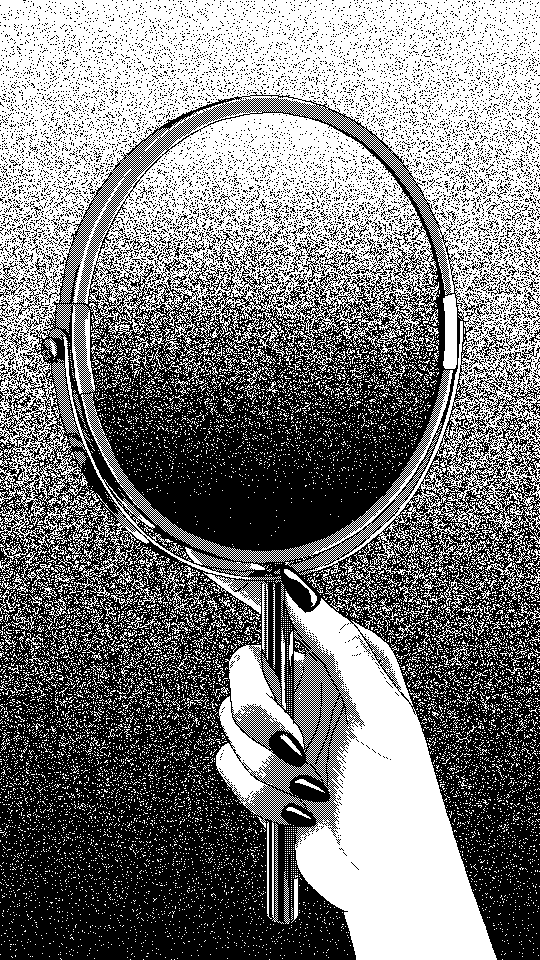
Keeping in mind the instilled algorithmic presence for ever-stricter and conformative body types that social media ultimately pushes upon users it was worth discussing the impact that this has upon LGBTQIA+ people. For Queer content creators who are not cisgender or do not fit the socially enforced view of an ideal body can often feel left behind and excluded from these online spaces and as a result move into more niche and accepting sub-communities usually on different social media platforms. Frequently queer people have described posting content that does not neatly fit into a cisgender and heteronomative sphere as a feeling comparable to ‘walking on eggshells because the chances of that content getting taken down off social platforms are so high’ (Duffy BE and Meisner, C 2022. p.296).
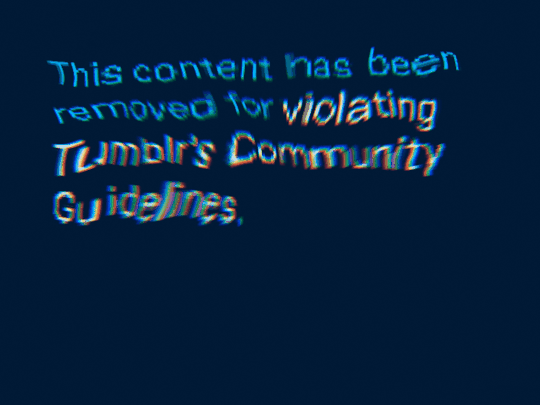
I am interested to see the way in which the growing resistance and awareness about social media's algorithmic discrimination develops. Although I feel as though even if the algorithms were to change drastically they would ultimately gravitate towards a similar trajectory that we are seeing now. Due to the largely anonymous nature of online activity I feel that platforms naturally tend to foster a space for conservative and narrow-viewed opinions and views.
References:
Carah N, Dobson A, 'Algorithmic Hotness: Young Women’s “Promotion” and “Reconnaissance” Work via Social Media Body Images'. Download Algorithmic Hotness: Young Women’s “Promotion” and “Reconnaissance” Work via Social Media Body Images'. Social Media + Society. October 2016
Duffy BE and Meisner, C 2022. “Platform governance at the margins: Social media creators’ experiences with algorithmic (in)visibility,” Media, Culture & Society. doi: https://doi.org/10.1177/01634437221111923 Links to an external site.
0 notes
Text
Social media and its impact upon the fashion industry
In recent years the fashion industry has seen seasons and cycles become faster and more frequent, whereas previously fashion companies may have had only two or so seasons a year; that number has now skyrocketed to, in some cases, hundreds of micro-seasons. Whilst this is of course desirable for the fashion industry to create more products to sell to consumers. From an environmental point of view this is creating further pollution and impact. The fashion industry already has a surprisingly high level of pollution and waste. Up to ‘20,000 liters of water are required to produce one kilogram of cotton for clothing. Furthermore, the textile industry produces unprecedented amounts of waste and pollution, with estimates going as far to suggest that the industry contributes to 17–20% of global industrial water pollution and 10% of the world's carbon emissions’ (Brewer, M 2019 p.2).
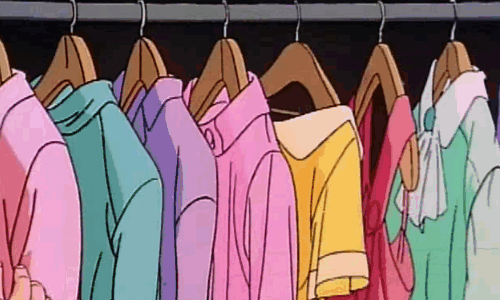
Keeping this in mind, as this information becomes more widely known many consumers are taking it upon themselves to source new clothes sustainably either through ethical brands. Crucially, ‘The number of consumers who are concerned about sustainability with their clothing and consider Slow Fashion as a way to achieve this are increasing, especially among young individuals, Companies are now faced with the challenge to answer promptly and in a manner that strikes a fine balance between business and environment to avoid risk of alienating existing clientele’ (Domingos, Mariana, Vale T, Faria S 2022 p.13).

Thrifting, for the most part, is an effective and environmentally conscious way of curating new clothes and styles. But in recent years as thrifting has increased in popularity there has also been an increase in the rise of thrifting and ‘haul videos’, these videos ironically transmogrify the worlds of fast and slow fashion and create an unsustainable desire over thrifted clothes. Personally I am interested to see where the current state of thrift shopping evolves too.
youtube
References:
Domingos, Mariana, Vera Teixeira Vale, and Silvia Faria. (2022). "Slow Fashion Consumer Behavior: A Literature Review" Sustainability 14, no. 5: 2860. https://doi.org/10.3390/su14052860
Mark K. Brewer, ‘Slow Fashion in a Fast Fashion World: Promoting Sustainability and Responsibility’, Laws 2019, 8(4), 24
2 notes
·
View notes
Text
Week 5 - Digital Citizenship and activism in the digital age
Social media has increasingly become a place for people to share not only funny photos of cats, but also to collectivise opinions and spark social movements with a speed and ferocity never before seen. Movements such as #metoo and #BLM exploded into the mainstream in recent years and have proven that hashtags can rapidly turn into movements that can become culturally significant due to the virality that hashtags allow for when presented with the right conditions.

More than anyone, we can see the impacts that this has on younger generations. As more young people join social media and as more and more niche and individualised groups appear it ultimately helps ‘more marginalised, underprivileged, and under-represented individuals feel visible and heard.’ (Moonsun C, Dean C 2021 p.365). By having more spaces in which individuals can interact mostly anonymously or to a group of friends or like minded individuals it seems to help the aforementioned underprivileged groups feel more welcome.
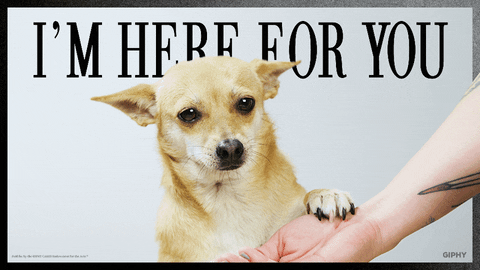
But whilst often this newly charged form of activism can be used for both positive and constructive change, it can equally backfire. Either from other users on a given platform, or by a platform's own algorithm. As some users seek to disrupt others social movements with a concept aptly named ‘hashtag hijacking’. For example, a ‘hashtag might be attached to the posts with anti-LGBTQIA+ stances as well as pro-LGBTQIA+ ones’ (Kim, Y., & Lee, S. 2022 p.6). What this can lead to is social media platform algorithms learning and changing to be potentially harmful and present more harmful content towards people on its site. We’re starting to discuss this more now with the rise of A.I. tools such as ChatGPT but all social media platforms ultimately suffer from this problem due to the inability to regulate the way that users decide to post, comment and interact on these platforms.

References:
Moonsun Choi & Dean Cristol (2021) ' Download 'Digital citizenship with intersectionality lens: Towards participatory democracy driven digital citizenship education', Download Digital citizenship with intersectionality lens: Towards participatory democracy driven digital citizenship education', Theory Into Practice, 60:4, 361-370, DOI: 10.1080/00405841.2021.1987094
Kim, Y., & Lee, S. (2022). #ShoutYourAbortion on Instagram: Exploring the Visual Representation of Hashtag Movement and the Public’s Responses. SAGE Open, 12(2). https://doi.org/10.1177/21582440221093327
0 notes
Text
Week 4 - Reality TV
Reality television is often disregarded when the conversation of quality television is brought up, and although in a plainly traditional sense of the term I would tend to agree, that reality Television provides a level of entertainment and community that other programs fail to come close to.
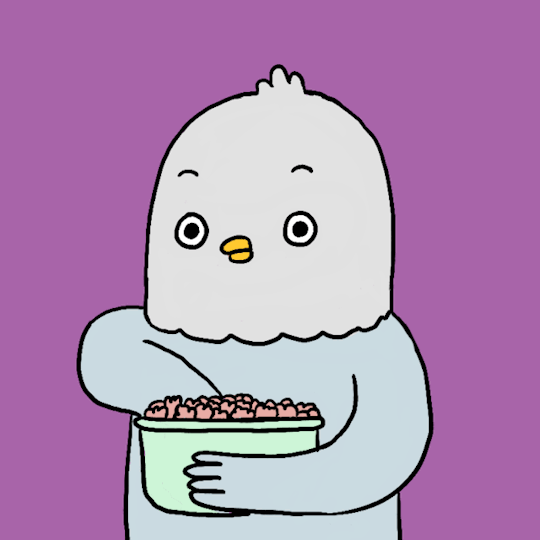
We are currently enjoying the ‘golden age’ of television, with notable programs such as The Sopranos and The Wire changing the very way in which television as a medium was perceived, gone were the days of light entertainment with weak writing and cheap production values, because it seemed as though television would undergo a radical transformation as the 21st century raged on. Whilst this was mostly true, with quality programming consistently being made across many channels and with various audiences in mind, seen in such programs as Mad Men and Mr Robot.
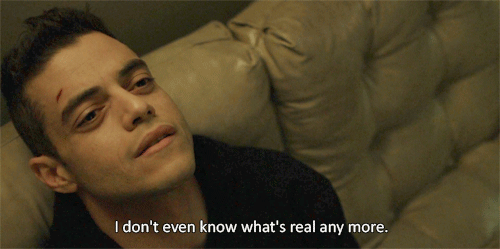
In the era of quality television many shows that were typically reserved for public television channels moved over to paid channels and subscriptions, due to this one genre quickly rose to consistently be in the primetime timeslot, in America especially this ‘doubled from 20 percent in 2001 to a staggering 40 percent in 2013’(Misha Kavka (2018 p.6). This genre of course, being reality television. Whilst I don’t often watch shows such as MAFS or Love Island I do however, love to watch old episodes and clips of shows such as Kitchen Nightmares, Hotel Hell and Shark Tank because of the pure entertainment value, the programs never attempt to be high art because the producers know what works best for the viewership of the programs.
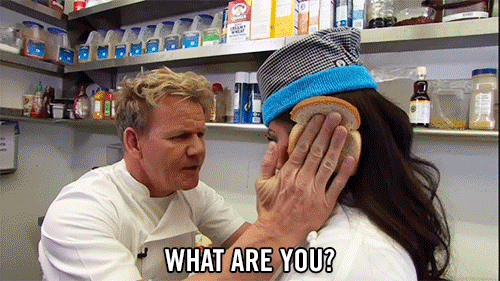
The impact of reality tv continues to echo across ‘online in forums, can be seen through web comments, blogs, vlogs and various social media platforms’. (Deller, Ruth A, (2019) p 153.) long after their original airing. What this ultimately proves is that reality television's lasting legacy is in the social aspect that these shows provide in a different way to those of more traditional aforementioned programming.
References:
Deller, Ruth A, (2019) Extract: 'Chapter Six: Reality Television in an Age of Social Media' Download 'Chapter Six: Reality Television in an Age of Social Media' in Reality Television: The TV Phenomenon That Changed the World (Emerald Publishing).
Misha Kavka (2018) ‘Reality TV: Its contents and discontents’, Download ‘Reality TV: Its contents and discontents’,Critical Quarterly 60(4): 5-18; DOI: 10.1111/criq.12442
0 notes
Text
Week 3 - Tumblr Case Study
Social media has become incredibly varied in both what the types of platforms are used for and also in the way that people use social media to communicate their stories and messages with the world, ‘and it is this rise and widespread societal acceptance of social media has ‘revolutionized the very structure of the public sphere. With the internet, a virtually unlimited number of news sites and forums for discussion have emerged’ (Brundidge, J 2010 pp.680)’. Which leads into our case study of Tumblr. Tumblr itself is a more niche form of social media, only averaging around 292 million visitors per month, struggling to even come close to the monthly active user numbers of platforms such as Facebook or Instagram.

Interestingly it may be the smaller community of Tumblr users that gives the site its appeal. Notably this can be seen in the case study of the hashtag ‘Body Positivity’. The use of this hashtag and what users post is an example of ‘Digital activism, and is in many ways a combination of approaches towards protesting,visibility, mobilization of different groups of people’ (Hutchinson J 2021 pp.37). This hashtag can be found across various platforms, particularly Instagram, Twitter and TikTok. Interestingly, whilst the overall message is the same each platform tumblr has a uniquely tumblr way of presenting the content surrounding this hashtag. ‘Often body-related hashtags tend to lead to individuals self-objectifying and becoming more critical, regardless of the good intentions behind the hashtag’ (Reif A, Miller I & Taddicken M 2022 pp.6). In a way, Tumblr users seek to lessen the self-criticism by more often featuring self-drawn artwork of themselves or original pieces of artwork they create in order to create more inclusive imagery in comparison to other social media sites.
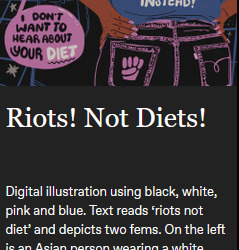
References:
Brundidge, J 2010, ‘Encountering “Difference” in the Contemporary Public Sphere: The Contribution of the Internet to the Heterogeneity of Political Discussion Networks’, Journal of communication, vol. 60, no. 4, Blackwell Publishing Ltd, Oxford, UK, pp. 680–700.
https://cloudincome.com/tumblr-statistics/
Jonathon Hutchinson (2021) Micro-platformization for digital activism on social media, Information, Communication & Society, 24:1, 35-51
Reif A, Miller I & Taddicken M 2022 pp.6
1 note
·
View note